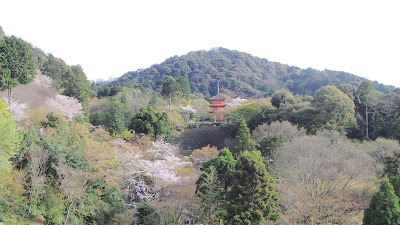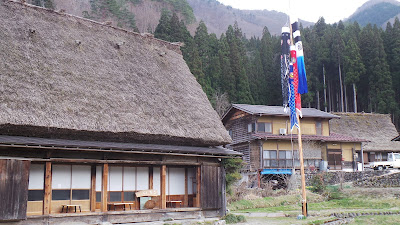 |
| A store in Kyoto specialising in chopsticks. A pair cost 1,000 Yen or more. Having one's name engraved will cost extra. |
 |
| And this specialises in knives used for cutting sashimi, meat, etc. Many Westerners patronise such stores for the quality of Japanese-made knives. |
 |
| This restaurant is well patronised. Diners sit next to a river adorned by Sakura trees in full bloom. |
 |
| Instant transformation into a 'Japanese couple'. |
 |
| With our travelling companions after our stroll in Gion, Kyoto, which used to be famous for its Geishas. Many tea-houses have now been transformed into shops, restaurants, etc, catering to tourists. |
 |
| Gate to Kyomizu Temple, a UNESCO World Heritage Site, and one of the famous Kyoto temples. |
 |
| Temple grounds which are sprawling, peaceful and serene. |
 |
| The temple itself. It's well known for its Cherry Blossoms in Spring and red leaves in Autumn. A magnificent structure indeed. |
 |
| The temple is built on stilts of solid hard wood. Not a single nail is used in its construction. A marvel in architecture. |
 |
| Gifu City from Gifu Castle. Presently, Gifu Castle is accessible by a cable way. |
 |
| A well manicured garden in Gifu Park at the bottom of the Castle mountain.There are four hiking trails in the mountain. |
 |
| Village of Shirakawago, another UNESCO World Heritage Site, with traditional thatched roof houses. Parts of the movie "The Last Samurai" were filmed here. |
 |
| Shirakawago lunch prepared with country ingredients. |
 |
| The hearth in the restaurant where people will gather round for their meals in winter. It used to be sunken. |
 |
| Attempting a break in into a barn? |
 |
| A store in the village with a modern roof. |
 |
| The flag pole outside the house is adorned with cloth streamers in the shape of fishes. Blue ones indicate the number of boys in a household and the red ones are for girls. |



No comments:
Post a Comment